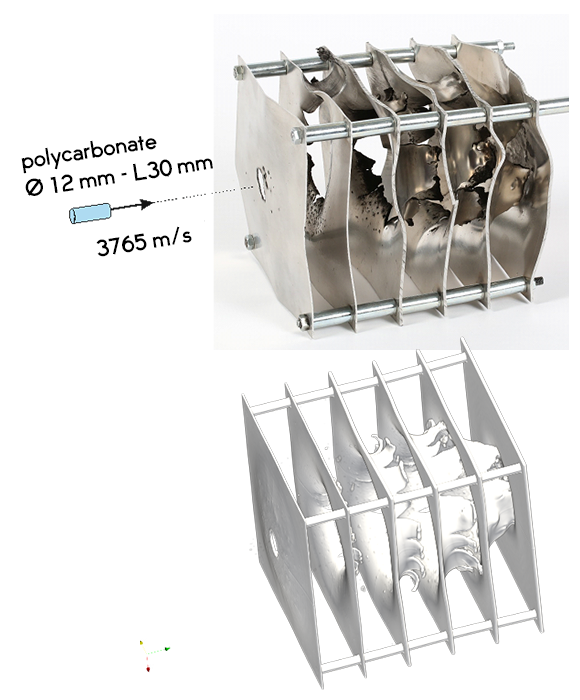In recent years, military news has reported on the emergence of new weapons and in particular new missiles with exceptional velocity and manoeuvrability capabilities. Hypersonic missiles are announced at speeds of MACH10, i.e. 10,000 km/h or 3,300 m/s. At these velocity levels, the phenomena of projectile impact against structures go beyond the standard framework of more “conventional” velocities. The physical phenomena associated with these impacts are much greater heating of the material, which can lead to changes in the state of this material as the shock waves pass through. The materials can thus transform into different metallurgical states (polymorphic transformation) or change state, i.e. from solid to liquid or even to gas (phase change).
To illustrate these particular physical phenomena, we carried out with the HERMES double stage gas gun of our laboratory an impact test at 3765 m/s: a polycarbonate projectile against a target composed of 6 spaced aluminium plates. The target recovered after the test is represented on the figure opposite with a scale diagram of the plastic projectile.
In order to reproduce the significant deformations and damages observed on these aluminium plates, we carried out a numerical simulation of this impact with the IMPETUS software, using a multiphase equation of state to reproduce the behaviour of polycarbonate under impact. This behavioral model, which reproduces the passage of this projectile from the solid state to the liquid state and to the gaseous state, leads to a faithful reproduction of the experimental observations, as shown in the figure opposite.
Allowing you to understand the functioning of threats by reproducing their effects and anticipating the behavior of structures around: this is the daily work of the technical and scientific teams of THIOT INGENIERIE.
Please contact us!

